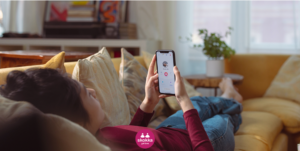I’ve never been a lover of purchasing expensive laptops, even after I could afford them. Just like with smart phones, there’s a definite point where the added features can’t justify the $1,000+ prices, unless you’re doing heavy productivity or gambling. My first notebook was that the ASUS Eee PC 1001PXD note book, which I had been pretty happy with at that time (today the 1024×600 display sounds atrocious), but the casing finally started to crack apart. I later switched to the first Dell Chrome book 13, but the constraints of the browser-only surroundings were too much to bear, so I purchased a Surface Guru 2.
The Surface Pro ended up having a pretty dreadful battery life, therefore I purchased a Dell Latitude 3340, which was fine – until I started working for Android Police. The 1366×768 display didn’t give me much property for writing and researching posts, and the bulky design didn’t help portability. So once more, I had been left with an option – do I spend an outrageous quantity of money to get a premium notebook, or roll the dice with a different mid-range or used computer?
After the addition of Android app assistance, Chrome OS once again seemed like a viable choice for me. Finally, I settled on the ASUS Chrome book Flip C302 (good title, I know). Even after almost a year of constant use, it is still holding up very well, and I believe that it’s the ideal value Chromebook that you can purchase.
ASUS Chromebook Flip C302 : SPECS
CPU Intel Core m3 6Y30
RAM 4GB
Display 12.5″ 1920×1080 IPS
Software Google Chrome OS with Play Store support
Dimensions 11.9 x 8.3 x 0.6 inches (Touchpad is 4.1 x 2.3 inches)
Connectivity 802.11ac dual-band 2×2, Bluetooth 4.0
Ports 2x USB 3.0 Type-C, headphone/microphone combo jack, microSD card
ASUS Chromebook Flip C302 : Design
Almost every Chromebook (Pixelbook excluded) falls into one of two categories – cheap machines which are unapologetically cheap (such as the ASUS C101PA), and mid sized laptops that feel like premium ultrabooks.
On the outside, the C302 appears like nearly every other ultrabook available on the market. It has a unibody aluminum design, using a 360-degree hinge that allows the screen to be flipped. On the back, there is a subtle ASUS logo at the center and Chrome branding at the top left. It looks quite similar to a MacBook Pro.
The other side has a microSD card slot, yet another Type-C port, and another speaker. Both interfaces may be used for charging, and encourage video out (in case you have the right adapter)
I’m still not a fan of any notebook ditching regular USB ports, but just how much of a hassle that is depends entirely on your workflow. I nearly never use flash drives at the first place, and my MX Master mouse connects Bluetooth. After I bought this HDMI adapter (for connecting the C302 for my projector) and a couple of Type-C-to-A dongles, I had been put.
The C302 is a convertible notebook, which means that you can flip the display around to use it as a tablet computer. In tablet mode, the keyboard and screen are held together using magnets. The big bezels surrounding the screen make holding the C302 in this way very comfy.
While the C302 does feel more superior than the price tag indicates there are a couple of indications that you’re not using a $1,000+ notebook. The lid flexes a bit when you press down on it, and the touchpad is a bit wonky (more on that at the next section). But the C302 is built well and looks excellent.
ASUS Chromebook Flip C302: Keyboard and Touchpad
I went to my regional Amazon showroom Best Buy to check out the Samsung Chromebook Plus/Pro (they have precisely the same layout), and though I enjoyed the taller screen and stylus support, the computer keyboard was possibly the worst part of this machine. The backspace key was absurdly tiny, and the keyboard was not backlit.
My job involves quite a great deal of typing, therefore the Chromebook Plus/Pro was a non-starter for me personally. Typing feels good, the layout is comfy, and the keys are clicky and responsive. Contrary to the Samsung Chromebook Plus/Pro, the entire keyboard is backlit.
Like just about every single Chromebook, the best row contains keys for media and browser navigation, rather than traditional function buttons. There’s a power key on the top right, which seems awful in the beginning, but Chrome OS requires you to hold it down for several seconds before the laptop shuts down. There is no chance of accidentally turning off the C302.
In general, I can not think of one difficulty I have with the C302’s computer keyboard, except it does not have the Pixelbook’s Assistant key. On this note, the Pixelbook is still the only Chromebook with Assistant.
The touchpad is a small different story. It is not particularly large, at four inches across (4.5″ on the diagonal), but it’s still perfectly usable. My main complaint is that it just feels cheap. For reasons unknown to me, clicking on the top or sides will occasionally sound like I’m breaking the entire mechanism.
Maybe it’s just my unit, but no matter that issue, the C302’s touchpad isn’t anything particularly special. Then again, that’s to be expected from whatever is not a MacBook.
On a last note, the C302’s display brightness must be just fine for many people. You probably won’t have the ability to read much in direct sunshine, but I have never had an issue getting work done indoors or in the shade.
ASUS Chromebook Flip C302: Screen
The C302 includes a 12.5-inch 1080p IPS screen, which can be a massive update from the 1366×768 Latitude laptop I had been using previously. Though 1440p and 4K laptops are getting to be commonplace, I think that the C302’s display is just nice. By default, Chrome OS will scale the port to 1536×864, providing a good balance between readability and screen real estate.
Occasionally, I will set Chrome OS to 100% climbing when I’m working on some jobs, however for the most part I leave it on the default. The bezels across the screen cause the laptop to seem a bit dated compared to the Dell XPS 13 or Huawei MateBook X Pro, but the C302 is half the price of those laptops. The bezels also produce the C302 easier to hold in tablet mode.
My sole complaint with the screen is that the aspect ratio. Most notebooks in recent years have employed a 16:9 aspect ratio, which is good for media playback, but maybe not the most appropriate for productivity. The Pixelbook, Samsung Chromebook Plus/Pro, and other laptops use 3:2 screens. I’d love to have a taller screen for functioning.
On a last note, the C302’s display brightness must be just fine for many people. You probably won’t have the ability to read much in direct sunshine, but I have never had an issue getting work done indoors or in the shade.
ASUS Chromebook Flip C302: Performance
I have the m3 C302, using an Intel Core m3 6Y30 processor and 4GB of RAM. That CPU was released in 2015 and relies on Intel’s Skylake architecture, so it’s not cutting-edge technology by any stretch of the imagination.
The most important benefit of this chip is that it doesn’t require any type of active coolingsystem, so the C302 does not have any fans in any way. The laptop is completely silent, but just like using smartphone and tablet processors, it’s going to thermal throttle (become slower) under heavy load to avoid overheating. This is not really an issue though, unless you’re playing 3D games for an elongated period of time.
Just how does it perform in real life? I don’t have any complaints. At most, I usually only have about 20 tabs open (and an Android app or two), so the 4GB RAM has never been a problem for me personally. Chrome OS is normally more lightweight than Windows or macOS, therefore the lower amount of RAM goes further on Chromebooks.
ASUS has released other variations of this C302 that utilize a Pentium, Core m5, or Core m7 processor. In my view, the pricing for these other versions does not make any sense. Best Buy is the only merchant in the usa selling the Pentium C302, but it is just $16 cheaper compared to more potent m3 version from Amazon. The C302 using a Core m5 prices over $100 over m3 version, but still has 4GB of RAM. Last, you’ve got the m7 model with 16GB of RAM for a whopping $900. For that price, you could just get a Pixelbook (which has a modern Core i5 chip, and is better in virtually every respect).
ASUS Chromebook Flip C302: Battery life
The battery life of this C302 is also pretty great. Not only is that the Core m3 chip quite power-efficient, but Chrome OS has a knack for lasting more than comparable Windows laptops. In my experience, the C302 usually tops out in 6-7 hours of usage. Again, this can vary greatly based on your workflow.
The facet of the C302 that surprised me the most was not the performance, build quality, applications, or even battery lifetime – it was the charging speed. Every laptop I’ve ever owned always took hours to completely charge, and also the C302 blows all of them out of the water. The included charger has a maximum rate of 20V/2.25A, that tops off the laptop’s battery at blisteringly-fast speeds. As a result of the C302’s power efficiency, even the charger from my 2016 Pixel can top up the Chromebook in a decent pace.
Only 30 minutes of charging may usually get me a while of work time, something that no other laptop I’ve owned could pull off. The C302 is not necessarily alone in this regard; David reported the Pixelbook was “probably the fastest-charging laptop I’ve ever used, with a long shot.”
There’s really only 1 factor of the C302’s battery lifetime which I’m not happy using – standby. If I leave it alone for more than a day or 2, it is going to be dead (or nearly dead). This isn’t a huge issue by any means, as long as you remember to shut down if stowing the C302 off, but it is still something to bear in mind.
ASUS Chromebook Flip C302: Software
Chrome OS is an interesting operating system. It started off as simply a full-screen Chrome window, and while it is still centered around web browsing, the continuous UI improvements and addition of Android app support have made it fairly great.
As much as it has grown, I believe most Chromebook owners will still concur that Chrome OS is all about compromise. There are not some movie editors or (good) Photoshop alternatives. As a web developer, I am still annoyed that there’s not any way of installing Visual Studio Code or Git to a Chromebook, capable of allowing Developer Mode and running Linux. You also wont find any desktop games available for Chromebooks, and quite few Android titles encourage keyboard input.
That being said, the majority of jobs I use a computer for can be performed onto a Chromebook. I can write Android Police posts in Chrome, message people through Hangouts (including SMS, since I’m on Job Fi), watch movies, chat on Slack and Discord, edit photographs with Lightroom, check social media, and manage remote computers/servers via Microsoft Remote Desktop and JuiceSSH.
For me, Chrome OS is attractive mostly because it’s the least dreadful desktop operating system I have tried. Windows is a jumble of heritage majority, poor design, and wrong priorities (no one cares about Paint 3D, Microsoft). MacOS looks great and can be constructed on a solid Unix core, however, the hardware is more costly and you are pushed in the Apple ecosystem. Linux is customizable and works on all, but still lacks lots of the applications I need on my desktop computer – and of course my favourite games.
Chrome OS, in my opinion, is an almost-perfect secondary OS. When I only need to watch YouTube in bed or compose articles from the park, I don’t need fifty apps running in the background. All I need is a web browser, a few Android apps, and kick-ass battery life. While I need to edit a picture in Photoshop, work on a website, or perform with a couple Overwatch matches, my Windows desktop is waiting and ready.
ASUS Chromebook Flip C302: Conclusion
Are Chromebooks for everybody? Absolutely not, however they do not have to be. The ASUS Chromebook Flip C302 is a fantastic notebook for people that can perform without legacy desktop software, or anybody trying to find a secondary computer. It doesn’t have all of the bells and whistles of more expensive notebooks, but it’s fast and has great battery life. Additionally, it is built to last – that I should know, I’ve had it for a year.
While the Pixel book remains unquestionably the very best Chrome book money can purchase, the C302 is perhaps the best value Chrome book. More than that, it may be one of the best value notebooks period.
If you want to obtain a Chrome book Flip C302, you can do this from the links below. As mentioned previously (in the Performance section), I only recommend the Core m3 model and not the Pentium, m5, or m7 models.




